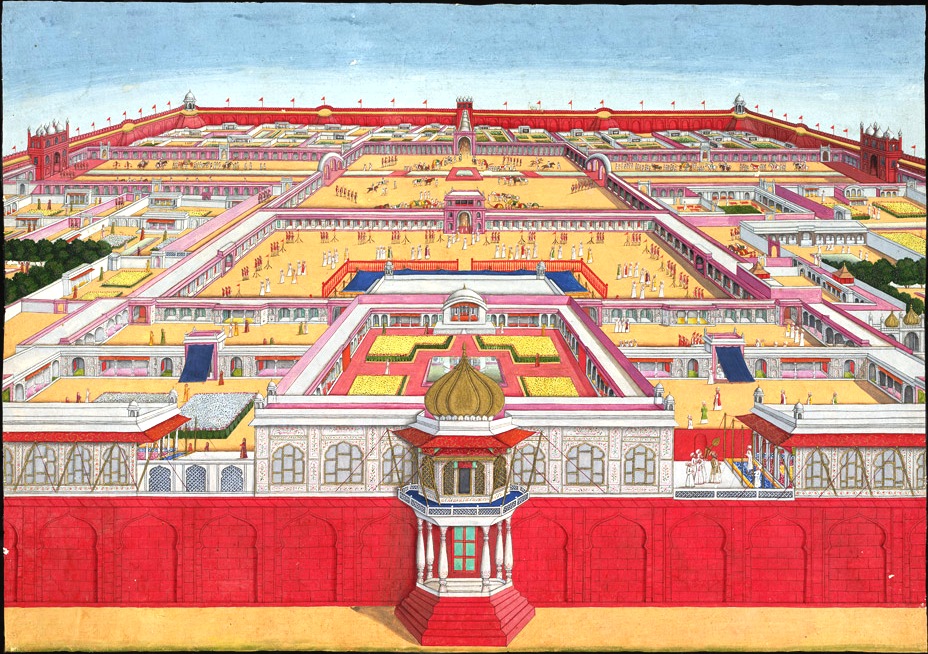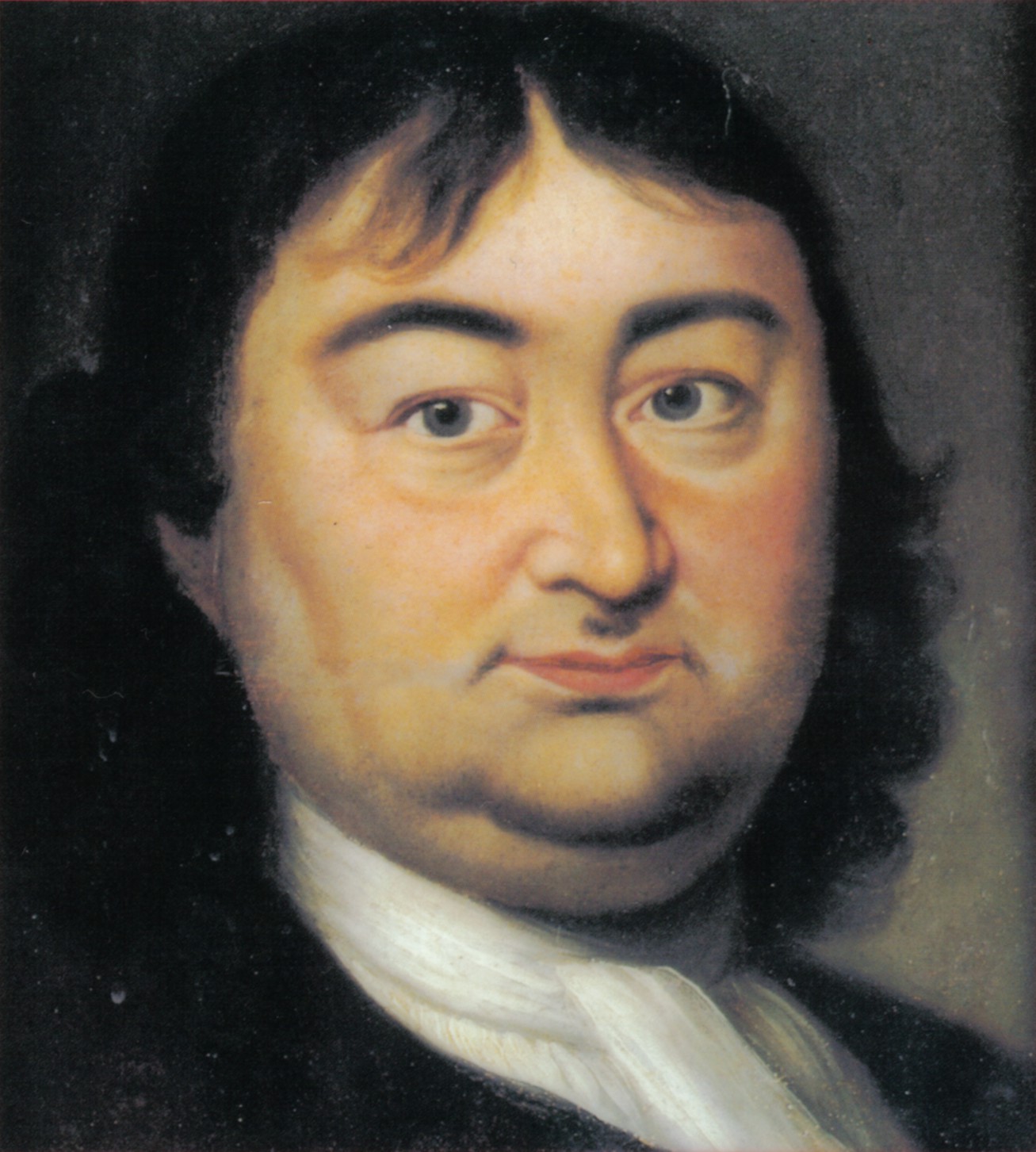|
Giovanni Domenico Santorini
Giovanni Domenico Santorini (June 6, 1681 – May 7, 1737) was an Italian anatomist. He was a native of Venice, earning his medical doctorate at Pisa in 1701. He is remembered for conducting anatomical dissections of the human body. From 1705 until 1728, Santorini performed anatomical demonstrations in Venice. His best written work was the 1724 publication of ''Observationes anatomicae'', a detailed work involving anatomical aspects of the human body. He is credited for providing descriptions of several anatomical structures, including the following: * Santorini's cartilage: The corniculate cartilage of the larynx. * Santorini's concha: The supreme nasal concha (turbinate).Supreme nasal concha. (n.d.) ''Medical Eponyms''. (2012). Retrieved April 16 2015 fro/ref> * Duct of Santorini: An accessory duct of the pancreas. * Santorini's fissures: Vertical fissures in the anterior part of the cartilage of the external acoustic meatus (ear canal). * Santorini's minor caruncle: Locat ... [...More Info...] [...Related Items...] OR: [Wikipedia] [Google] [Baidu] |
Pancreatic Duct
The pancreatic duct, or duct of Wirsung (also, the major pancreatic duct due to the existence of an accessory pancreatic duct), is a duct joining the pancreas to the common bile duct. This supplies it with pancreatic juice from the exocrine pancreas, which aids in digestion. Structure The pancreatic duct joins the common bile duct just prior to the ampulla of Vater, after which both ducts perforate the medial side of the second portion of the duodenum at the major duodenal papilla. There are many anatomical variants reported, but these are quite rare. Accessory pancreatic duct Most people have just one pancreatic duct. However, some have an additional accessory pancreatic duct, also called the Duct of Santorini. An accessory pancreatic duct can be functional or non-functional. It may open separately into the second part of the duodenum,Moore KL, Dalley AF. 2006. Clinically Oriented Anatomy. 5th Ed. Lippincott Williams & Wilkins. p 287.1. Mchonde GJ, Gesase AP. Termination p ... [...More Info...] [...Related Items...] OR: [Wikipedia] [Google] [Baidu] |
Italian Anatomists
Italian(s) may refer to: * Anything of, from, or related to the people of Italy over the centuries ** Italians, an ethnic group or simply a citizen of the Italian Republic or Italian Kingdom ** Italian language, a Romance language *** Regional Italian, regional variants of the Italian language ** Languages of Italy, languages and dialects spoken in Italy ** Italian culture, cultural features of Italy ** Italian cuisine, traditional foods ** Folklore of Italy, the folklore and urban legends of Italy ** Mythology of Italy, traditional religion and beliefs Other uses * Italian dressing, a vinaigrette-type salad dressing or marinade * Italian or Italian-A, alternative names for the Ping-Pong virus, an extinct computer virus See also * * * Italia (other) * Italic (other) * Italo (other) * The Italian (other) The Italian may refer to: * ''The Italian'' (1915 film), a silent film by Reginald Barker * ''The Italian'' (2005 film), a Russian film by A ... [...More Info...] [...Related Items...] OR: [Wikipedia] [Google] [Baidu] |
1737 Deaths
Events January–March * January 5 – Spain and the Holy Roman Empire sign instruments of cession at Pontremoli in the Grand Duchy of Tuscany in Italy, with the Empire receiving control of Tuscany and the Grand Duchy of Parma and Piacenza, in return for Don Carlos of Spain being recognized as King of Naples and King of Sicily. * January 9 – The Empires of Austria and Russia enter into a secret military alliance that leads to Austria's disastrous entry into the Russo-Turkish War. * January 18 – In Manila, a peace treaty is signed between Spain's Governor-General of the Philippines, Fernándo Valdés y Tamon, and the Sultan Azim ud-Din I of Sulu, recognizing Azim's authority over the islands of the Sulu Archipelago. * February 20 – France's Foreign Minister, Germain Louis Chauvelin, is dismissed by King Louis XV's Chief Minister, Cardinal André-Hercule de Fleury * February 27 – French scientists Henri-Louis Duhamel du Monceau and G ... [...More Info...] [...Related Items...] OR: [Wikipedia] [Google] [Baidu] |
1681 Births
Events January–March * January 1 – Prince Muhammad Akbar, son of the Mughal Emperor Aurangzeb, initiates a civil war in India. With the support of troops from the Rajput states, Akbar declares himself the new Mughal Emperor and prepares to fight his father, but is ultimately defeated. * January 3 – The Treaty of Bakhchisarai is signed, between the Ottoman vassal Crimean Khanate and the Russian Empire. * January 18 – The " Exclusion Bill Parliament", summoned by King Charles II of England in October, is dissolved after three months, with directions that new elections be held, and that a new parliament be convened in March in Oxford. * February 2 – In India, the Mughal Empire city of Burhanpur (now in the Indian state of Madhya Pradesh) is sacked and looted by troops of the Maratha Empire on orders of the Maratha emperor, the Chhatrapati Sambhaji. General Hambirrao Mohite began the pillaging three days earlier. * March 4 – K ... [...More Info...] [...Related Items...] OR: [Wikipedia] [Google] [Baidu] |
Who Named It
''Whonamedit?'' is an online English-language dictionary of medical eponyms and the people associated with their identification. Though it is a dictionary, many eponyms and persons are presented in extensive articles with comprehensive bibliographies. The dictionary is hosted in Norway Norway, officially the Kingdom of Norway, is a Nordic country in Northern Europe, the mainland territory of which comprises the western and northernmost portion of the Scandinavian Peninsula. The remote Arctic island of Jan Mayen and t ... and maintained by medical historian Ole Daniel Enersen. References External links * Medical websites Medical dictionaries Eponyms {{online-dict-stub ... [...More Info...] [...Related Items...] OR: [Wikipedia] [Google] [Baidu] |
Prostatic Venous Plexus
The prostatic veins form a well-marked prostatic plexus which lies partly in the fascial sheath of the prostate and partly between the sheath and the prostatic capsule. It communicates with the pudendal and vesical plexuses. The prostatic venous plexus drains into the internal iliac vein which connects with the vertebral venous plexus, this is thought to be the route of bone metastasis of prostate cancer. It is sometimes known as "Santorini's plexus," named for the Italian anatomist Giovanni Domenico Santorini. References External links * - "The Male Pelvis: The Prostate Gland" Veins of the torso Prostate {{circulatory-stub ... [...More Info...] [...Related Items...] OR: [Wikipedia] [Google] [Baidu] |
Retropubic Space
Retropubic space is a potential avascular space located between the pubic symphysis and the urinary bladder. The retropubic space is a preperitoneal space, located behind the transversalis fascia and in front of peritoneum . Other names for the retropubic space are "Cave of Retzius" or "Retzius' space", named after the Swedish anatomist Anders Retzius (1796-1860). The space is a useful landmark in different gynecological and urological surgeries. Structure The space is located in the pelvic region and is bounded by the following structures: *Anteriorly: Symphysis pubis *Laterally: Pubic rami and obturator internus muscles *Posteriorly: Urinary bladder *Floor: Anterior vagina (in women) and proximal urethra Function The retropubic space is a potential space. Compartmental Pressure The retropubic space is directly adjacent to the abdominal cavity and is hence affected with change in intra-abdominal pressure, which in turn affects the physiology of urination and continenc ... [...More Info...] [...Related Items...] OR: [Wikipedia] [Google] [Baidu] |
Superior Sagittal Sinus
The superior sagittal sinus (also known as the superior longitudinal sinus), within the human head, is an unpaired area along the attached margin of the falx cerebri. It allows blood to drain from the lateral aspects of anterior cerebral hemispheres to the confluence of sinuses. Cerebrospinal fluid drains through arachnoid granulations into the superior sagittal sinus and is returned to venous circulation. Structure Commencing at the foramen cecum, through which it receives emissary veins from the nasal cavity, it runs from anterior to posterior, grooving the inner surface of the frontal, the adjacent margins of the two parietal lobes, and the superior division of the cruciate eminence of the occipital lobe. Near the internal occipital protuberance, it drains into the confluence of sinuses and deviates to either side (usually the right). At this point it is continued as the corresponding transverse sinus. The superior sagittal sinus is usually divided into three parts: ante ... [...More Info...] [...Related Items...] OR: [Wikipedia] [Google] [Baidu] |
Parietal Foramina
A parietal foramen is an opening in the skull for the parietal emissary vein, which drains into the superior sagittal sinus. Occasionally, a small branch of the occipital artery can also pass through it. It is located at the back part of the parietal bone The parietal bones () are two bones in the skull which, when joined at a fibrous joint, form the sides and roof of the cranium. In humans, each bone is roughly quadrilateral in form, and has two surfaces, four borders, and four angles. It is named ..., close to the upper or sagittal border. It is not always present, and its size varies considerably. Parietal foramina tend to be symmetrical, with the same number on each side. See also * Foramina of skull References External links Foramina of the skull {{musculoskeletal-stub ... [...More Info...] [...Related Items...] OR: [Wikipedia] [Google] [Baidu] |
Bernhard Siegfried Albinus
Bernhard Siegfried Albinus (originally Weiss; 24 February 16979 September 1770) was a German-born Dutch anatomist. He served a professor of medicine at the University of Leiden like his father Bernhard Albinus (1653–1721). He also published a large-format artistic atlas of human anatomy, with engravings made by Jan Wandelaar. Biography Bernhard Siegfried Albinus was born at Frankfurt on the Oder where his father, Bernhard Albinus (1653–1721), was professor of the practice of medicine. In 1702 the latter was transferred to the chair of medicine at Leiden University, and it was there that Bernhard Siegfried began his studies in 1709, at the age of 12, having for his teachers such men as Boerhaave and Govert Bidloo. Having finished his studies at Leiden, he went to Paris in 1718, where, under the instruction of Sébastien Vaillant (1669–1722), Jacob Winslow (1669–1760) and Frederik Ruysch, he devoted himself especially to anatomy and botany. After a year's absence ... [...More Info...] [...Related Items...] OR: [Wikipedia] [Google] [Baidu] |
Duodenum
The duodenum is the first section of the small intestine in most higher vertebrates, including mammals, reptiles, and birds. In fish, the divisions of the small intestine are not as clear, and the terms anterior intestine or proximal intestine may be used instead of duodenum. In mammals the duodenum may be the principal site for iron absorption. The duodenum precedes the jejunum and ileum and is the shortest part of the small intestine. In humans, the duodenum is a hollow jointed tube about 25–38 cm (10–15 inches) long connecting the stomach to the middle part of the small intestine. It begins with the duodenal bulb and ends at the suspensory muscle of duodenum. Duodenum can be divided into four parts: the first (superior), the second (descending), the third (horizontal) and the fourth (ascending) parts. Structure The duodenum is a C-shaped structure lying adjacent to the stomach. It is divided anatomically into four sections. The first part of the duodenu ... [...More Info...] [...Related Items...] OR: [Wikipedia] [Google] [Baidu] |
_CIPB2104.jpg)


